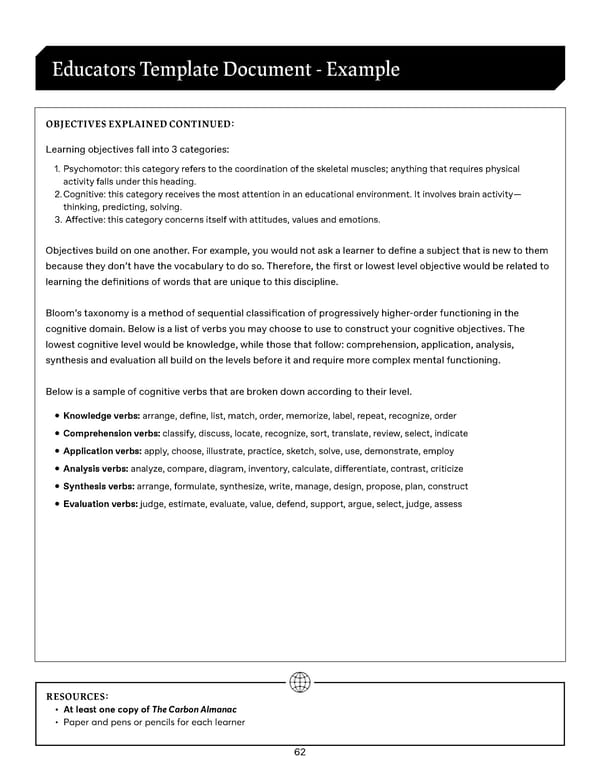Educators Template Document - Example OBJECTIVES EXPLAINED CONTINUED: Learning objectives fall into 3 categories: 1. Psychomotor: this category refers to the coordination of the skeletal muscles; anything that requires physical activity falls under this heading. 2. Cognitive: this category receives the most attention in an educational environment. It involves brain activity— thinking, predicting, solving. 3. A昀昀ective: this category concerns itself with attitudes, values and emotions. Objectives build on one another. For example, you would not ask a learner to de昀椀ne a subject that is new to them because they don’t have the vocabulary to do so. Therefore, the 昀椀rst or lowest level objective would be related to learning the de昀椀nitions of words that are unique to this discipline. Bloom’s taxonomy is a method of sequential classi昀椀cation of progressively higher-order functioning in the cognitive domain. Below is a list of verbs you may choose to use to construct your cognitive objectives. The lowest cognitive level would be knowledge, while those that follow: comprehension, application, analysis, synthesis and evaluation all build on the levels before it and require more complex mental functioning. Below is a sample of cognitive verbs that are broken down according to their level. • Knowledge verbs: arrange, de昀椀ne, list, match, order, memorize, label, repeat, recognize, order • Comprehension verbs: classify, discuss, locate, recognize, sort, translate, review, select, indicate • Application verbs: apply, choose, illustrate, practice, sketch, solve, use, demonstrate, employ • Analysis verbs: analyze, compare, diagram, inventory, calculate, di昀昀erentiate, contrast, criticize • Synthesis verbs: arrange, formulate, synthesize, write, manage, design, propose, plan, construct • Evaluation verbs: judge, estimate, evaluate, value, defend, support, argue, select, judge, assess T RESOURCES: • At least one copy of The Carbon Almanac • Paper and pens or pencils for each learner 62
 Educators’ Guide Page 61 Page 63
Educators’ Guide Page 61 Page 63